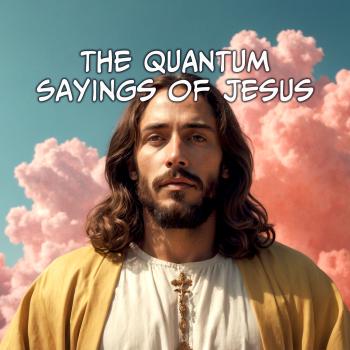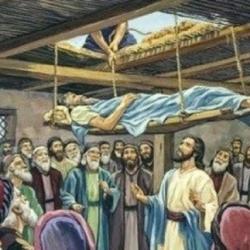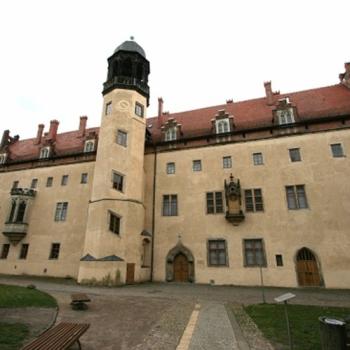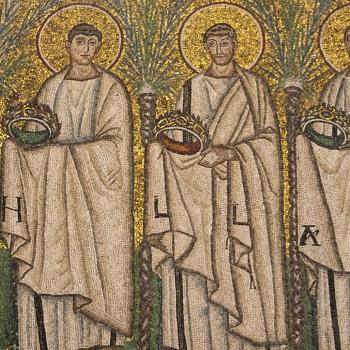
Admittedly, anyone who has paid attention to the traditional secular symbols of Easter—the bunnies, the eggs, the chicks, etc.—will be struck with the fact that many of the major symbols of this popular Christian holiday appear to be about fertility and, thus, potentially pagan in origin. Indeed, a lot about how this once entirely Christian holiday is celebrated can leave you scratching your head and asking, “Is Easter a pagan holiday?”
Religious vs. Secular Observances
Easter is celebrated in two very distinct ways. At churches, there is the religious commemoration, with fasting (or lent) and the employment of symbols like palm fronds, crosses, and a focus on Christ’s empty tomb. In private homes, however, the holiday is celebrated through the utilization of symbols such as bunnies and baskets, chicks and chocolate. Thus, two very different things are being commemorated on this annual holiday—contingent upon whether one is religious or secular in their approach and celebration.
So, what elements of Easter today have pagan parallels? And does it matter that a holiday entirely about Jesus’ death and resurrection is celebrated today while incorporating bunny rabbits, colored eggs, and chocolate? Well, here are a few things to consider.
The Holiday’s Name
In many languages, Easter takes its name from the Jewish holiday, Passover. However, in English, our name for the holiday appears entirely unrelated to the word “Passover.” In the 8th century, the Venerable Bede argued that it derived from Eostre or Eostrae, the Anglo-Saxon goddess of spring and fertility. However, elsewhere we are informed the English word “Easter” comes from “a Latin phrase that was understood as the plural of alba (‘dawn’) and became eostarum in Old High German, the precursor of the modern German and English term.” Thus, it appears that our English word is actually an attempt at highlighting the “dawn” of Easter morn when Christians believe that Jesus broke the bands of death and made salvation possible to all who believe.
The Easter Bunny
Contrary to popular opinion, a direct link to paganism and the Easter Bunny can’t be made. While the symbol may have a parallel in both traditions—the first mention of the “Easter hare” is in a 1722 book written by German professor of medicine, Georg Franck von Franckenau, and the German tradition had no pagan connections.
Easter Eggs
While no one seems to know for certain how the tradition of coloring and eating Easter eggs got started, we do know that the practice was present in Christianity at least as early as the 13th century. While it is conjectural, since eggs were one of the foods Christians were traditionally expected to give up during lent, some believe that the custom of decorating them and eating them on Easter simply marked the end of the arduous Lenten season. Could the symbol have been drawn from paganism? It certainly could have been, though it isn’t evident that such is the case.
Easter Candy
One source, highlighting many of the common secular symbols of Easter, noted: “Among the most popular sweet treats associated with [Easter] are chocolate eggs, which date back to early 19th century Europe. Eggs have long been associated with Easter as a symbol of new life and Jesus’ resurrection. Another egg-shaped candy, the jelly bean [sic], became associated with Easter in the 1930s (although the jelly bean’s origins reportedly date all the way back to a Biblical-era concoction called a Turkish Delight).” Importantly, sweets and treats simply don’t have pagan connections. The heavy consumption of Easter candy likely grew out of the breaking of the Lenten fast and the tradition of gorging oneself (on Eastern morn) on all that had been prohibited for the last forty-days.
Does it Even Matter?
Rather than asking “Is Easter a pagan holiday?” perhaps we should be asking, “Do the parallel symbols between paganism and Easter matter?” A singular symbol can have multiple meanings, contingent upon the religion or culture employing the image or symbolic element. And something which serves as a negative symbol in one culture can be a positive emblem in another religion or tradition. Those who suggest that Easter is simply a coopting of paganism by Christianity point to parallels in some of the symbolism, but they typically ignore the symbols with no pagan parallels—and they consistently ignore the fact that we actually can’t prove this proposed borrowing. Symbols ultimately represent what the person or organization employing them see them as meaning for them. Regardless of how those symbols are employed in other cultures and religions—and regardless of whether one tradition borrowed from another—their symbolic meaning is determined by the person or organization employing the symbol. Consequently, many of the symbols present in paganism and secular Easter commemorations have entirely different meanings, even if we can’t prove or disprove connections between the two sets of symbols. And in the end, all that really matters is whether these symbols help you think of and remember Christ at a time of the year in which we commemorate the most important act in human history—the ransom sacrifice and bodily resurrection of the Son of God.
5/14/2024 8:33:43 PM










